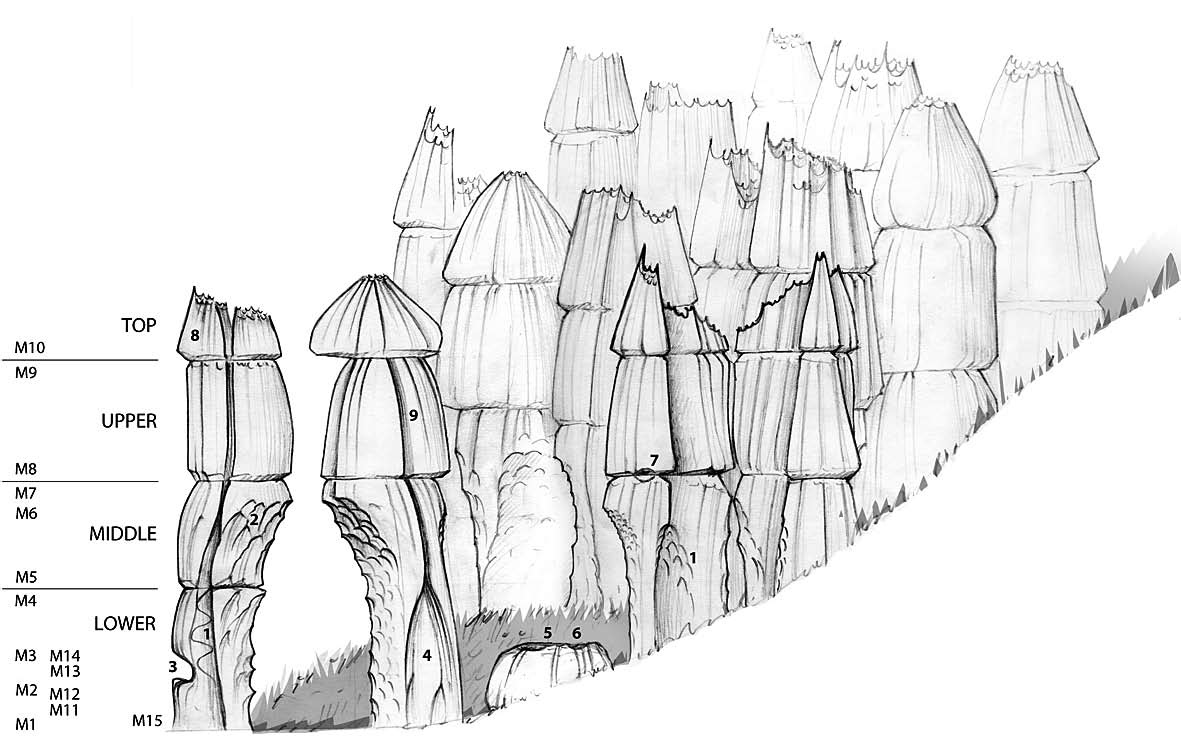Major stone forest, litomorphogenesis and development of typical shilin (Yunnan, China)
DOI:
https://doi.org/10.3986/ac.v41i2-3.558Povzetek
Major stone forest excellently reveals most characteristics of the formation of the various stone forests. The relatively thick stratification and evenly composed rock clearly display the development of stone forests from subsoil karren. This is evident from the shape of individual parts of the stone forest and the shape and rock relief of pillars that comprise the forest. It is the most typical example of development of karren from subsoil to rain and vegetation exposed stone forest. With it we can compare stone forests shaped on different rock and geomorphological and hydrological conditions. Type of rock is clearly reflected in the intensity of corrosion and erosion and with it in the formation and morphological appearance of individual stone pillars and larger blocks of rock. The rock relief on the pillars in stone forests reveals the interwoven traces of the original shaping of the rock below soil and sediment, of the lowering of the level of soil and sediment, and of the younger but distinct transformation of pillars by rainwater, which naturally dominates on the tops. The exceptional character and picturesqueness of this karst phenomenon is the reason for the successful developmentof the stone forest as an international tourist attraction that was deservedly placed on the UNESCO world heritage list.Prenosi
Podatki o prenosih še niso na voljo.

Prenosi
Objavljeno
2012-12-15
Kako citirati
Knez, M., Slabe, T., & Liu, H. (2012). Major stone forest, litomorphogenesis and development of typical shilin (Yunnan, China). Acta Carsologica, 41(2-3). https://doi.org/10.3986/ac.v41i2-3.558
Številka
Rubrike
Original papers
Licenca
Avtorji jamčijo, da je delo njihova avtorska stvaritev, da v njem niso kršene avtorske pravice tretjih oseb ali kake druge pravice. V primeru zahtevkov tretjih oseb se avtorji zavezujejo, da bodo varovali interese založnika ter da bodo povrnili morebitno škodo.
Podrobneje v rubriki: Prispevki




